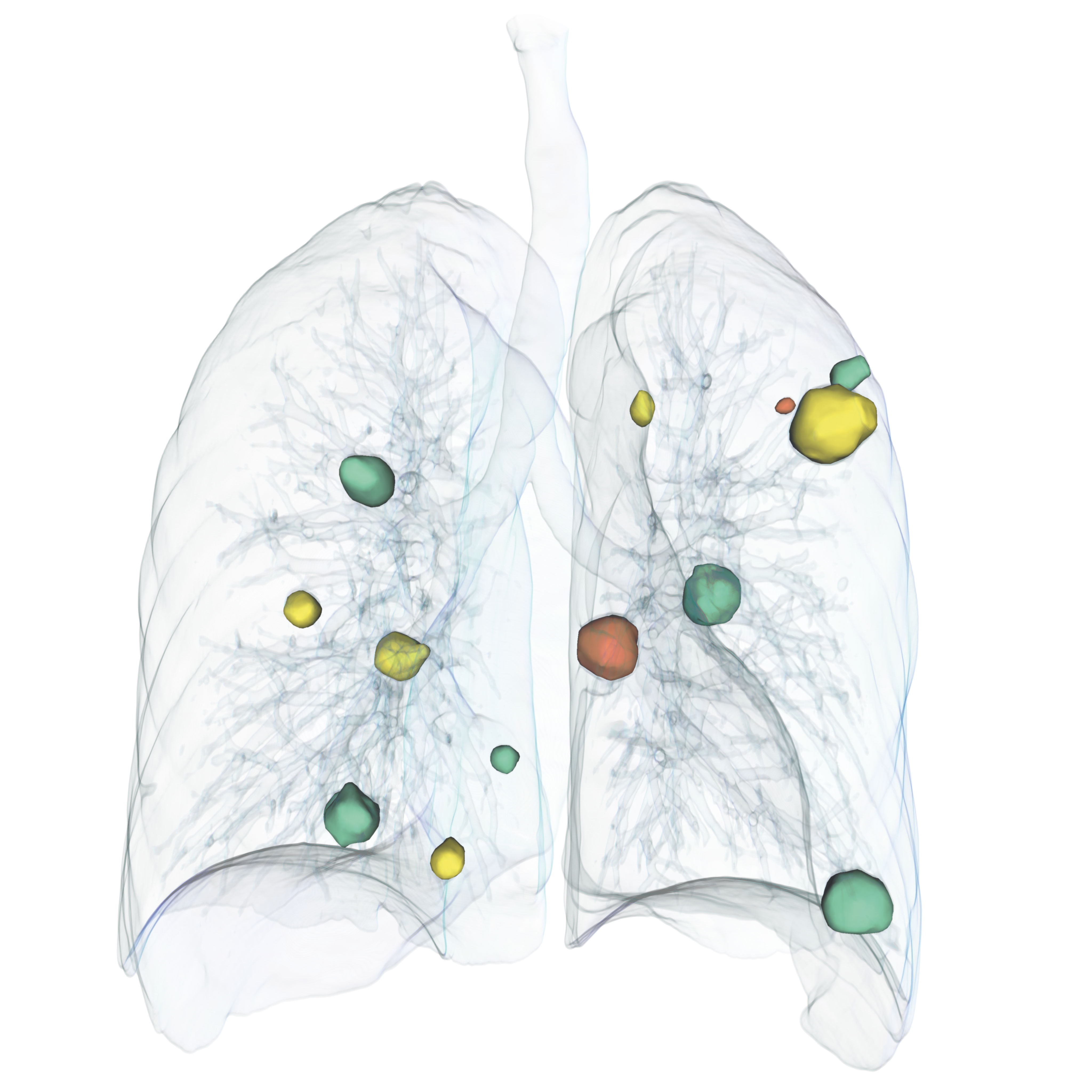The challenge in tumor follow-up assessment
The number of cancer patients with follow-up CTs is increasing. This causes a high workload and severe stress for radiologists. In clinical routine, often just a visual assessment is feasible, leading to accuracy and quality issues.
The good news
Advances in AI-based image analysis enable automation of key tasks. Computers are particularly good at spotting differences in image pairs, such as new lesions. They can also measure size changes in 3D volumes reliably. Our mission is to bring these capabilities into practical use and leverage them for more efficient workflow in the clinic.
What it takes to succeed
From discussions with radiologists, we know that a neat integration into radiology workflows and infrastructure is key. Waiting and correction time is not acceptable. Therefore, we are developing robust and fast algorithms that make the follow-up assessment more efficient.
Our solutions
We have developed algorithms to measure lesions with a single click in the first exam and fully automatically during follow-up. Our neural networks have been trained on more than 16,000 lesions in CTs from over 20 clinics. Our accurate deformable registration enables a slice and cursor synchronization which facilitates the visual comparison of images.
Your best partner
We have long-term experience in image segmentation and registration, particularly in oncological applications, and combine data-driven and knowledge-based approaches. Our network of clinical partners enables us to deeply understand medical needs. Our unique position between business, technology, and clinical use enables us to make a difference in clinical routine.
 Fraunhofer Institute for Digital Medicine MEVIS
Fraunhofer Institute for Digital Medicine MEVIS
